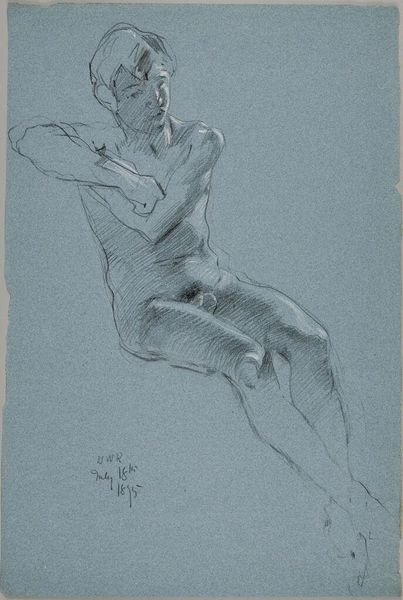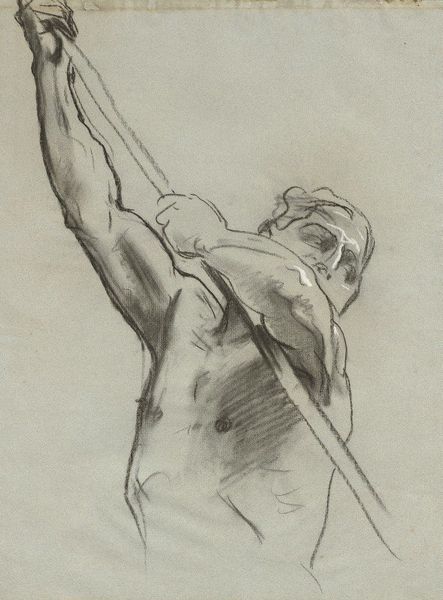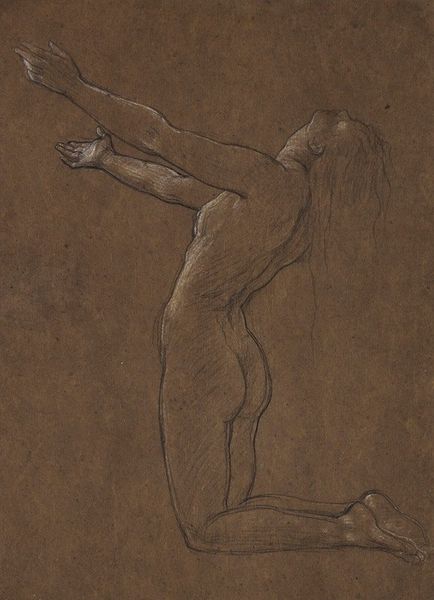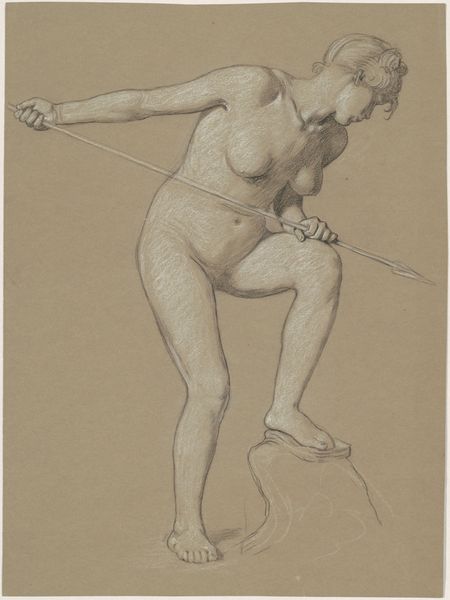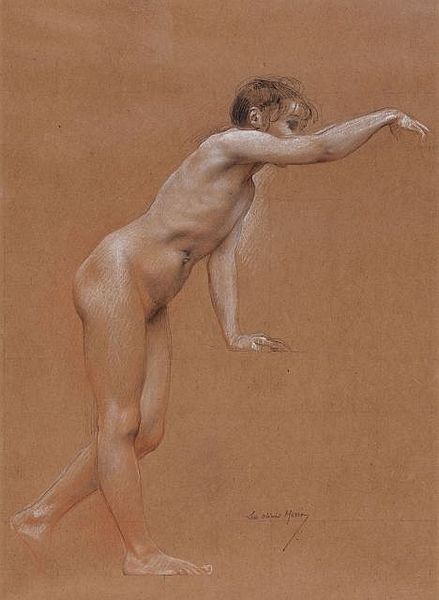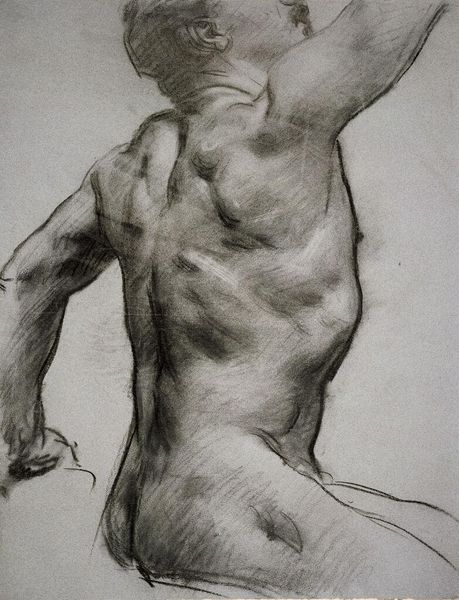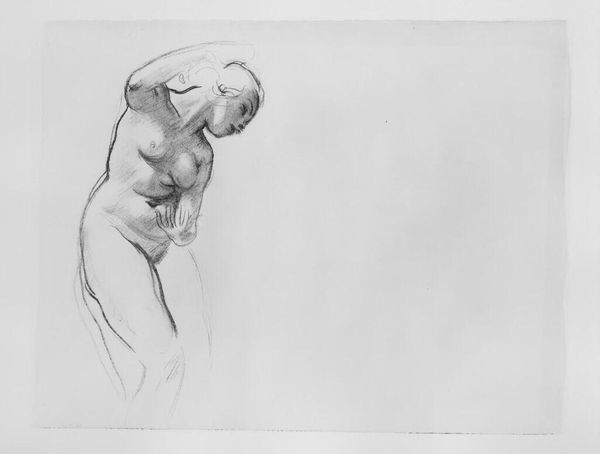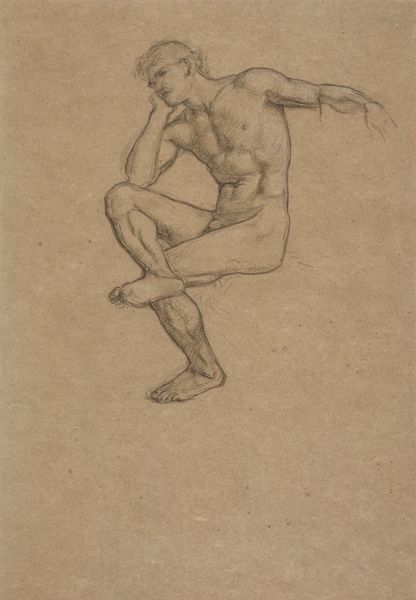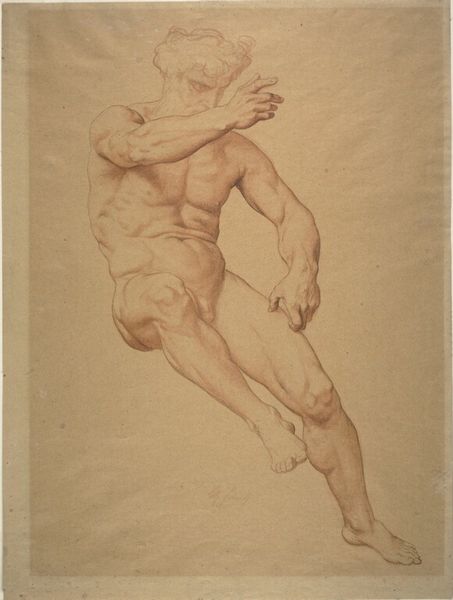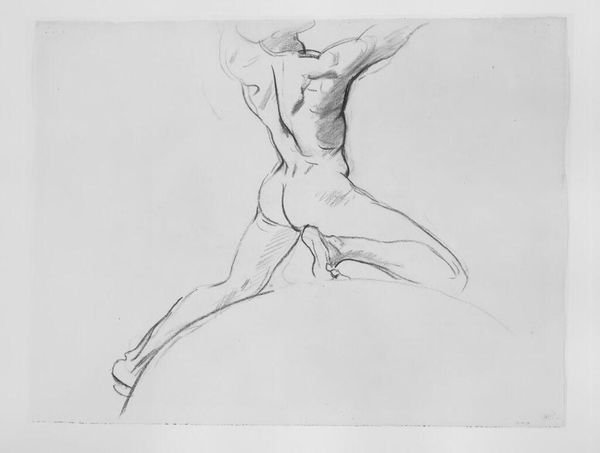
drawing, charcoal
#
drawing
#
charcoal drawing
#
figuration
#
form
#
underpainting
#
charcoal
#
academic-art
#
nude
Copyright: Public Domain: Artvee
Editor: This is Edwin Austin Abbey's charcoal drawing, "Study for Science Discovering the Treasures of the Earth," created in 1969. It's striking how the artist uses light and shadow to define the figure's muscular form. What do you see in this piece beyond just the figure study? Curator: Well, let's think about 1969. It was a moment of incredible optimism about science and technology; we'd just landed on the moon! Abbey, though, seems to be participating in a much longer-standing tradition of depicting scientific inquiry as a kind of heroic, almost god-like quest. Think of earlier allegories of science. Does this depiction challenge or reinforce societal power structures around knowledge? Editor: I guess I hadn't considered the allegorical aspect, especially given the title. It's interesting to think of science being "discovered" like buried treasure. But who gets to decide what those treasures are and who benefits? Curator: Exactly. Notice the pose; it’s reminiscent of classical sculpture. And what about the decision to depict "Science" as a nude figure? Is it about purity of intellect or something else? How does that affect its public reception? Editor: I suppose it adds to the timeless feel, linking scientific pursuit to ideals of classical beauty and truth. But, in its own way, that limits who can identify with that ideal. It feels almost exclusionary now, doesn't it? Curator: It absolutely does. By focusing on an idealized form, it unintentionally sets science apart from the everyday experience of people, maybe reinforcing a sense of science as an exclusive domain. Editor: That’s a fascinating way to look at this seemingly straightforward study. I see it differently now. Curator: Precisely! Art provides these amazing glimpses into how society understands itself at different points in time, especially through the lens of institutions.
Comments
No comments
Be the first to comment and join the conversation on the ultimate creative platform.
